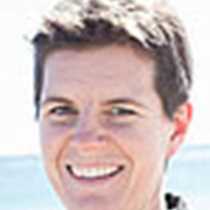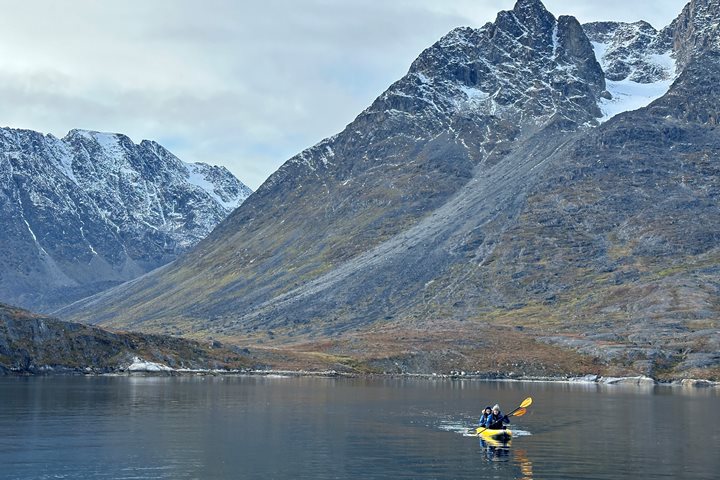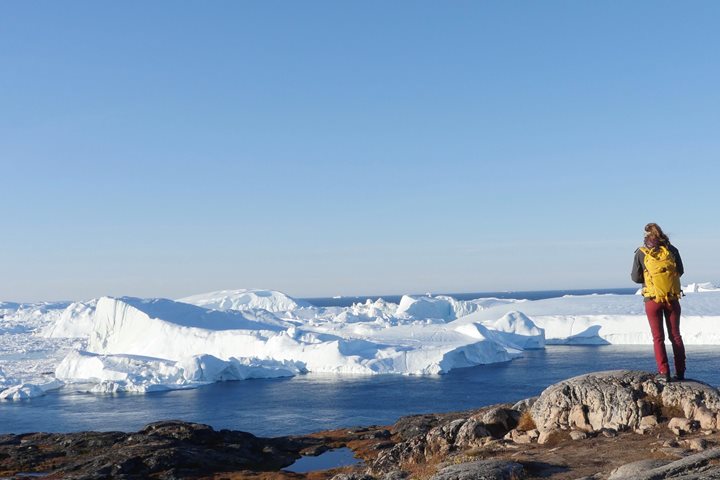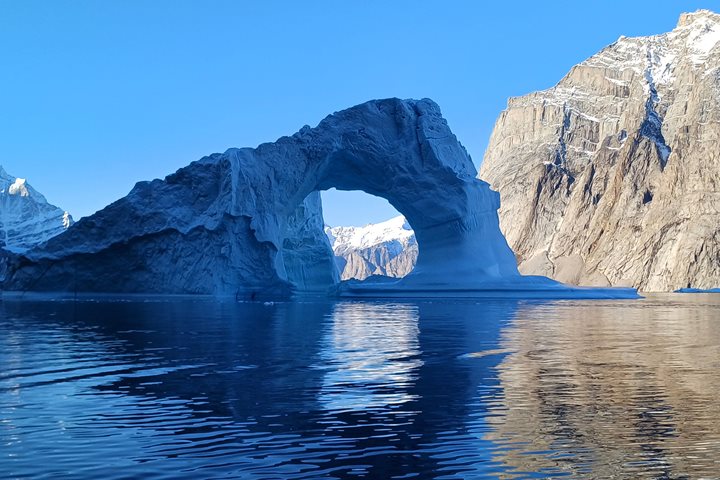Late yesterday afternoon, we departed Disko Island and sailed north along the west coast of Greenland. Dense fog dominated our views from the time we awoke through dinner, making it difficult to gauge the passage of time or miles during today’s transit across Baffin Bay. Connected to the Atlantic Ocean by the Davis Strait and to the Arctic via a suite of narrow passages between the islands that make up the Canadian Arctic Archipelago, Baffin Bay was named by English merchant-explorers in the early 1600s who sought an ice-free maritime route to the Pacific. They were unsuccessful, and the area was not further investigated by European mariners for nearly two centuries. Its remoteness remains powerful many years later.
About a third of the way across Baffin Bay, we saw – and felt! – the first sea ice of the voyage. In winter, the bay can be frozen from shore to shore, but offshore pack ice only remains in the central and western regions through the summer, alternately dispersed and reaggregated by wind and currents. Vigilant observers watched for wildlife from the bridge, reporting the ever-reliable fulmars plus increasing numbers of dovekies and several swimming seals.
With beautifully calm conditions, our passage across Baffin Bay allowed guests to take full advantage of National Geographic Endurance’s many amenities as well as a series of lectures. In Sisimiut, a local paddler showcased an incredible array of qajaq (kayak) rolling skills; this morning, naturalist Mike Jackson shared more about the history of the Greenland qajaq and gave us a glimpse into his own experiences learning to build, paddle, and roll one. National Geographic photographer Ken Garrett discussed his photography career and philosophy with tips applicable to the wildlife, communities, and landscapes we may wish to document on this voyage. Finally, guest speaker Eva Aariak described the Arctic flora we’ve encountered thus far, Inuit life, traditions in Nunavut with a lens on the past, and moments from her childhood. Fortunately, we have time together over the next few weeks, as the Canadian Arctic region is culturally rich and ecologically diverse – so much to discover!







